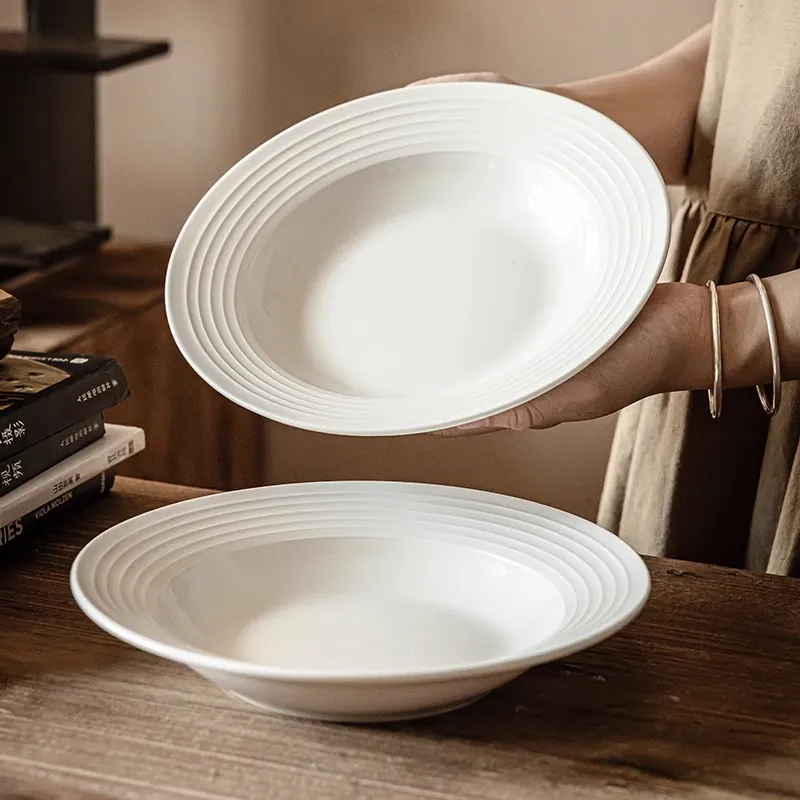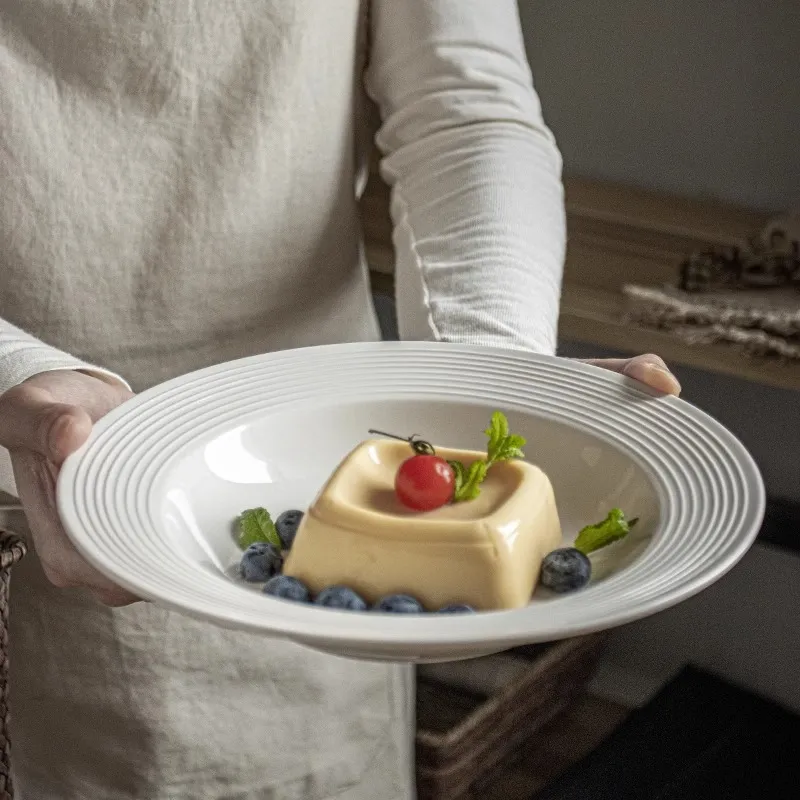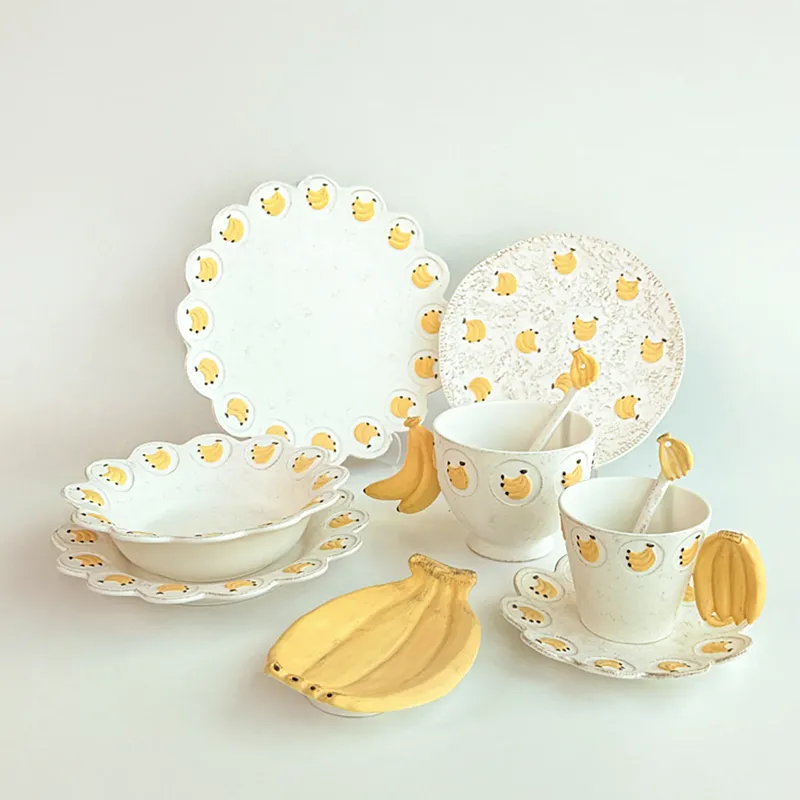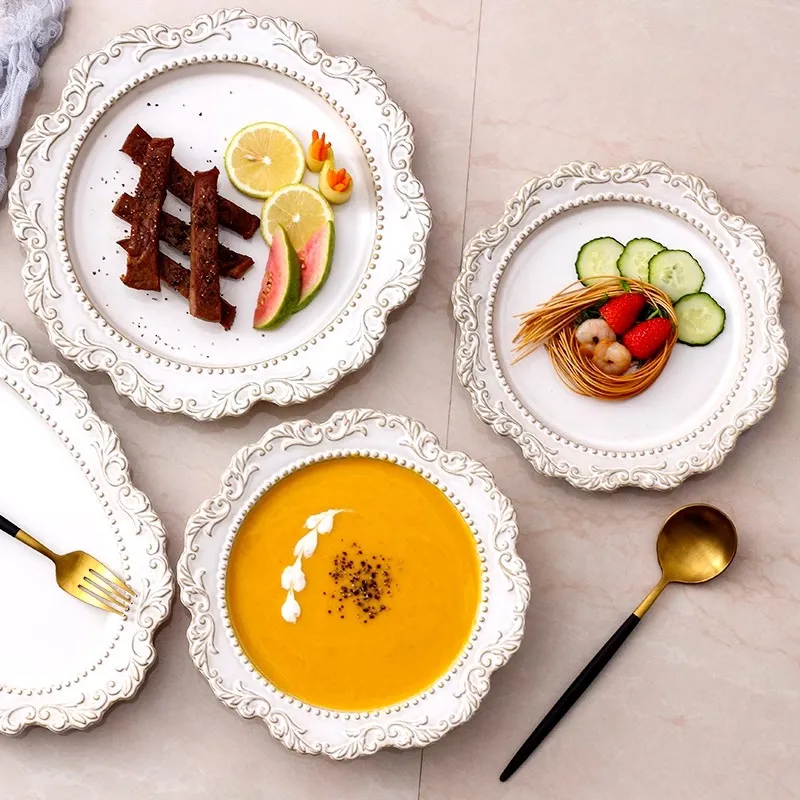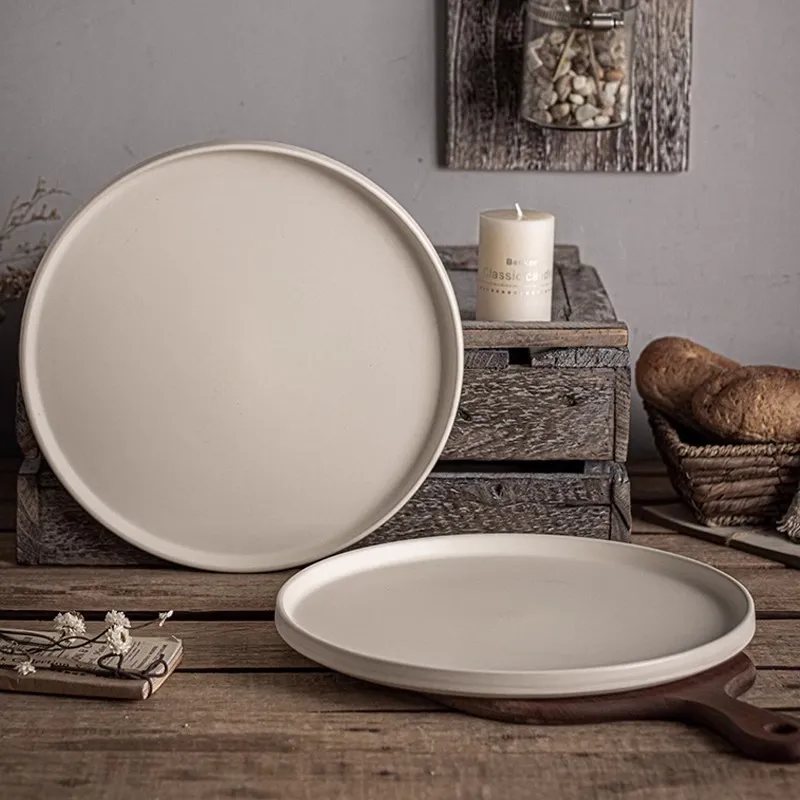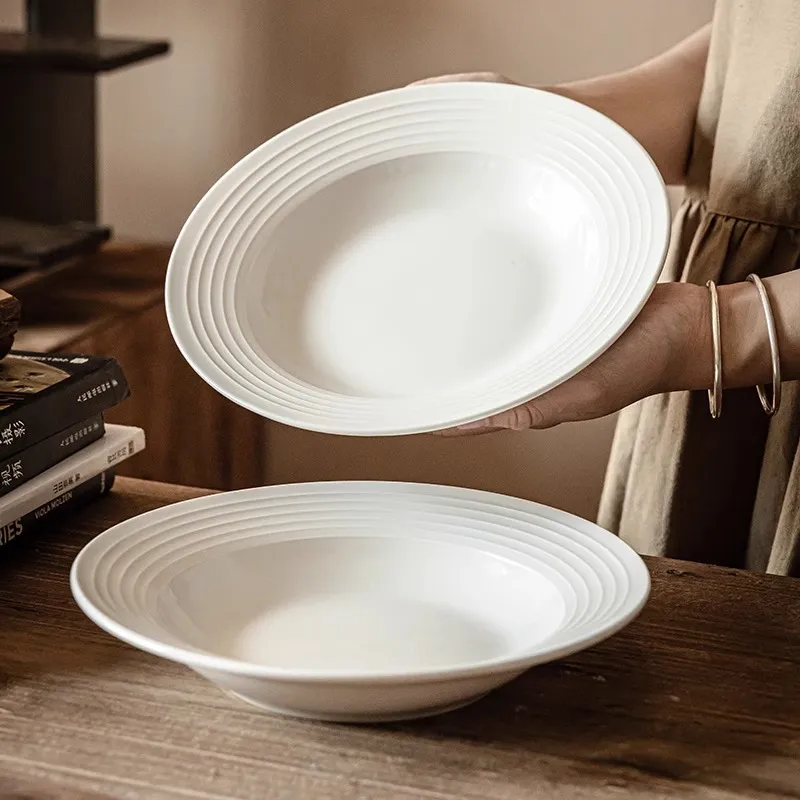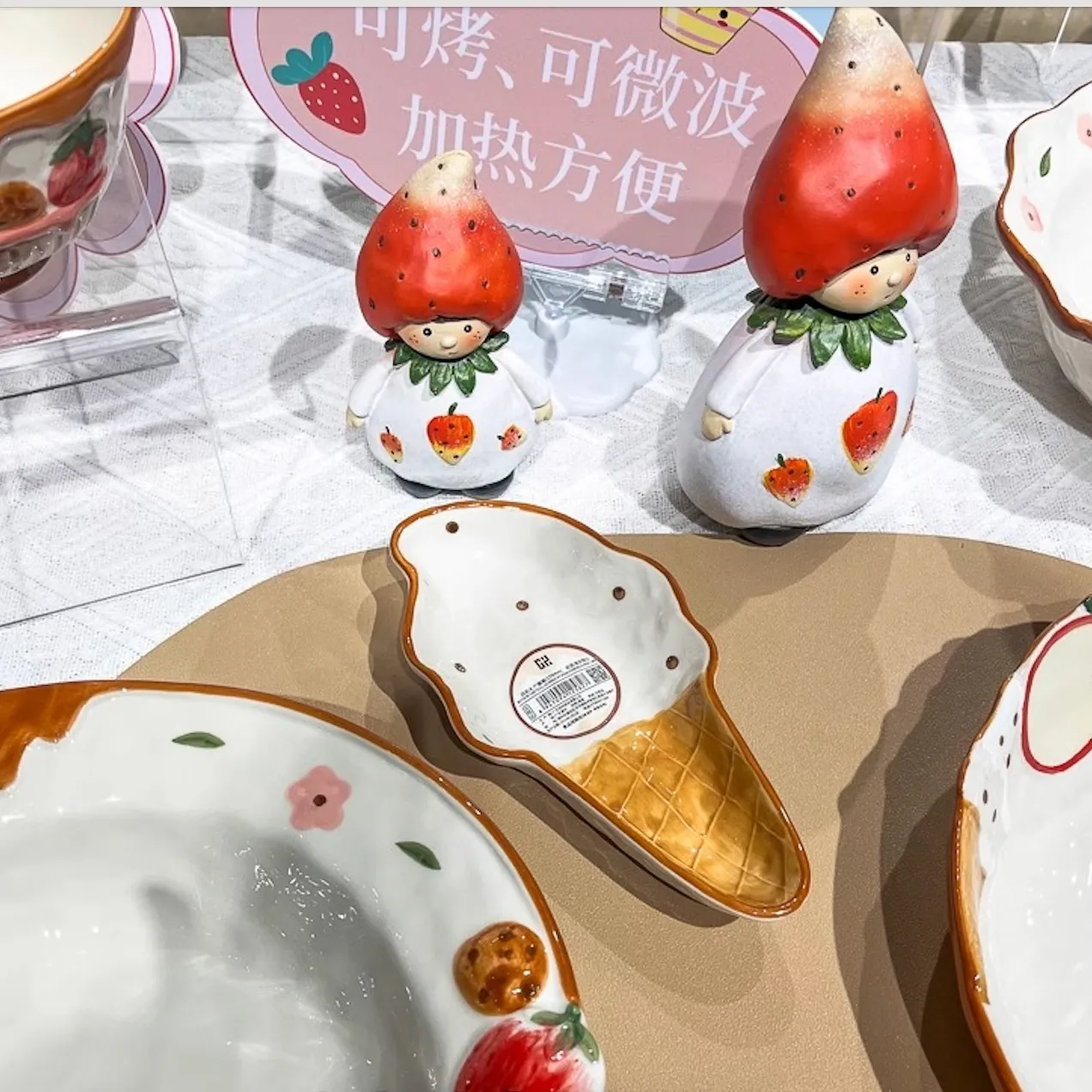Choosing the right ceramic tableware for restaurants not only impacts the presentation of your dish but has a direct impact on its durability and guest satisfaction. Here’s a practical buying guide to help restaurant buyers purchase quality ceramic tableware for restaurants.
Choosing Glaze
The beautiful patterns of ceramic tableware for restaurants are largely attributed to the glaze, and the glazing process directly affects the safety of the tableware. Glazes can be divided into three categories:
- Overglaze: Less safe, with an uneven surface that is not just visible but also feels rough to the touch.
- Underglaze and Underglaze: Safe and sound, with a smooth glassy surface and no unevenness.
When purchasing ceramic tableware for restaurants, run your hand lightly over the surface. Smooth and glossy, it indicates a safe glaze.
Material Choice
Bone china and strengthened porcelain are best for quality ceramic tableware for restaurants:
- Bone china: Creamy white color, highly translucent, and light in weight. Gently tap two bowls together; if there is a sharp, ringing sound, it is an indication of quality material.
- Reinforced porcelain: Hard and durable, withstanding regular restaurant usage.
Choose ceramic tableware for restaurants fired at a high temperature (1350°C) to ensure safety and durability.
Appearance Inspection
When purchasing ceramic tableware for restaurants, carefully inspect the appearance of the tableware:
- Is it round and smooth?
- Are there any cracks, spots, bubbles, or defects?
- Is the surface gloss uniform?
We recommend against purchasing ceramic tableware for restaurants with defects, as this will affect the restaurant’s image and longevity.
Color Fading Test
Scrub the surface of the ceramic tableware for restaurants gently. When the color is discolored, the glaze is unstable and cannot be used in restaurants. Tableware with non-fading and stable color is of higher quality.
Sound Test
Tap the surface of the ceramic tableware for restaurants and listen to the sound to determine quality:
- A ringing, clear, and pleasant sound indicates high-quality ceramic.
- A dull or muffled sound indicates lower quality.
This simple method can immediately determine the firing density and quality of the ceramic.
Temperature Requirements
The glaze of ceramic tableware for restaurants must be fired at temperatures above 800°C for safety. High-end bone china is fired at 1350°C for better durability and safety.
Buying Tips for Complete Sets
Tips in purchasing a complete set of ceramic tableware for restaurants are as follows:
- Check for consistent glaze color, pattern, gloss, and style.
- Thin-wall tableware can be checked for evenness of transparency and thickness when held against light.
- A harmonious and uniform appearance enables simple overall restaurant coordination.
Summary and Buying Tips
When selecting ceramic tableware for restaurants, consider the glaze process, material, appearance, durability, and safety. High-quality ceramic tableware for restaurants not only enhances the presentation of the dish but also extends its lifespan while saving on replacement costs.
About Yicheng Ceramic
Yicheng Ceramics is a professional manufacturer of ceramic tableware for restaurants, offering first-rate bone china and reinforced porcelain tableware, as well as OEM wholesale services. Yicheng Ceramics rigorously controls glaze colors and firing processes to ensure the strength, beauty, and safety of tableware. Whether it’s a classic tableware collection or a cutting-edge custom design, Yicheng Ceramics provides restaurants with consistent, economical alternatives to enhance a variety of dining settings.


